Welcome to To Vegetables, With Love, a celebration of a vegetable life, less ordinary. Find archived recipes on my recipe index.
My book Tenderheart is available from Books are Magic, Kitchen, Arts and Letters, Book Larder, Bold Fork Books and also here or here.
Life resumes during Autumn in New York. The kids go back to school, and the house, and my time, become mine again. I reset. I recalibrate.
This year, the recalibration is greater than years before. My daughter recently moved out to start college. She is in a new city, a new country in fact. I am doing my best to muster the same courage she has shown, but it feels heavy to wake up and realize she is not in her bedroom. It is destabilizing to know I have one less person to cook for every night, one less palette to satisfy. I am finding it hard to let go, the cord is being stretched further than it has ever before. FaceTime helps.
The night before we took her to her new adventure, I cooked her an Indian feast - tamatar ki chaat (tomato chaat), masala potato balls (alu bonda), palak paneer (spinach paneer curry), lacchko moong (simply spiced whole moong dal), all recipes from Chetna Makan’s upcoming new book Easy Indian Vegetarian. I felt comfort in following another’s recipe and the distraction of being busy in the kitchen staved off the propensity to micromanage her packing. Every recipe was delicious. Let me know which of Chetna’s above recipes you’d be interested in me sharing here in this newsletter:
All my kids love Indian food. Like me, they crave unrelenting flavours and spice. One of my daughter’s favourite dishes is pav bhaji. I had never made it at home but when I saw the recipe in my friend Khushbu Shah’s new-ish and super fun book AMRIKAN, I felt compelled to try it. It did feel weird to be making a dish that I knew she would love but wasn’t home to try, but it is also exciting to have a new dish that I can make for her when she visits.
I could not love Khushbu’s pav bhaji more. It’s made with pantry ingredients - potatoes, frozen peas, cauliflower, tomatoes (either fresh or canned) - and is packed with veggies. I actually blitzed the cauliflower so it was more well mashed because I have a cauliflower texture-adverse teen. The chunky gravy is served on top of grilled potato rolls, which makes it incredibly hearty. A real weeknight winner.
Pav bhaji is traditionally a buttery dish - Khushbu sent me the video below to show the amount of butter that is used on the streets of Mumbai. As a person who is fairly conservative with the amount of butter I use in cooking, it did give me heart palpitations but also, how delicious! Khushbu’s recipe uses 1 tablespoon but you do you ;)
Thank you to Khushbu for giving me permission to share her wonderful pav bhaji recipe with you all here. And make sure you check out Khushbu’s excellent Sustack Tap Is Fine! for restaurant recommendations around the world and more.
COOK / EAT / SHARE
NEW RECIPES
Dip for dinner is a favourite way to eat for me, so in this new NYT Cooking recipe, I took inspiration from tzatziki to create a chickpea and cucumber salad. It’s the perfect recipe to serve alongside crusty bread or something heartier like pan-fried halloumi, falafels, veggie burgers etc. For vegans, coconut yoghurt works great.
Hot off the press, there’s this gorgeous and super satisfying salad - grilled eggplant, herby lentils and turmeric tahini.
NEW YORK EVENT
I will be speaking with Priya Krishna at James Beard Foundation Platform on September 18 at 6.30pm. Bites from Tenderheart will be served and there will be books for sale. It has been a while since I have done a signing, but I’d love to see you. Tickets are available here and use discount code chefsept10 for 10% discount.
🥦 My cookbook, Tenderheart is for cooking vegetables, all year round. Pick up your copy here. It is also mostly vegan (or vegan-izable) and gluten-free adaptable.
THIS WEEK’S RECIPE
Pav bhaji
© Excerpted with permission by Hetty Lui McKinnon for To Vegetables, With Love from “AMRIKAN: 125 Recipes from the Indian American Diaspora”. Copyright © 2024 by Khushbu Shah. Photographs © 2024 by Aubrie Pick. Used with permission of the publisher, W.W. Norton & Company. All rights reserved.
Headnote from Khushbu:
How did one of Mumbai’s most famous street foods—the ultimate late-night snack—become an easy weeknight dinner in America? Pav bhaji consists of toasted bread (pav) and mashed, seasoned vegetables (bhaji), plus plenty of butter (but they for some reason left that out of the name). People like to describe it as “Indian sloppy joes,” and while visually they have similarities, the taste could not be more different.
At its simplest, pav bhaji is made from mashed potatoes and peas, cooked in a tomato-onion gravy and then heavily seasoned. If you have other vegetables on hand that mash well, feel free to throw them in: cauliflower, eggplant, carrots, green beans. If you have a freezer stocked with frozen vegetables, this is the dish to make when last-minute guests come over.
Instead of pav, a type of soft bread roll whose origins are rooted in the Portuguese colonization of India’s western coast, my recipe calls for griddled potato rolls or hamburger buns. The best way to serve pav bhaji is with lemon wedges and a mountain of raw onions. There is a running joke in my family that I eat my onions with a little bit of bhaji.
Note from Hetty:
amchur is a dried mango powder. I didn’t have any so I made mine without.
Serves 4 to 6
Quick Pav Bhaji Masala
1 tablespoon Garam Masala
2 teaspoons Kashmiri red chili powder
2 teaspoons amchur
1 teaspoon ground turmeric
1 teaspoon ground coriander
1 teaspoon ground cumin
1/2 teaspoon ground cinnamon
1/2 teaspoon ground cardamom
2 tablespoons neutral oil or ghee
1 large white onion, minced
3 or 4 Roma tomatoes, chopped, or 1/2 (14-ounce) can crushed tomatoes
4 medium red potatoes, boiled until mashable and peeled
1/2 head cauliflower, boiled until mashable
1 cup frozen green peas, boiled until mashable
Salt to taste
1 to 2 cups water
1 tablespoon unsalted butter, plus more for the bread
4 to 8 potato rolls or hamburger buns
Lemon wedges, for serving
Sliced onion, for serving
In a small bowl, combine all of the quick pav bhaji masala ingredients; set aside.
In a large pot, heat the oil over medium heat. Add the onion and sauté for 2 to 3 minutes, until it begins to soften, then add the tomatoes. Let the mixture cook down until the tomatoes start to get jammy and the oil starts to separate from the mixture, 7 to 8 minutes. Add the potatoes, cauliflower, and peas and gently mash them into the tomato gravy—I prefer to leave some small pieces of the vegetables so the mash has some texture. Add the pav bhaji masala, salt, and 1 cup water and stir. Bring the mixture to a simmer and let the flavors meld for about 10 minutes, then turn off the heat, cover, and let it sit for 5 to 10 minutes. Add up to 1 cup more water if needed; you want the texture to be like sloppy joes - spoonable but not thick.
Heat a large skillet or griddle over medium heat. Spread a generous amount of butter on the cut sides of each roll and griddle them until the bread is lightly toasted, about 1 minute.
Pop the remaining 1 tablespoon butter into the mashed vegetable mixture and stir until it melts. I like to squeeze several lemon wedges over the vegetables and top with a proper flourish of raw onions before piling it onto a griddled roll.
Ingredient Note
If you don’t want to make the pav bhaji masala, you can easily buy a premade version at most Indian grocery stores or online. Just replace the quick pav bhaji masala from the recipe with about 2 tablespoons of the premade masala blend.
Freezer Note
Leftover bhaji will keep in an airtight container in the freezer for at least 3 months.
To Vegetables, With Love is my love letter to vegetables and it is a joy to bring you a new recipe every week. Thank you to everyone who subscribes, especially to paid subscribers who make this work possible.

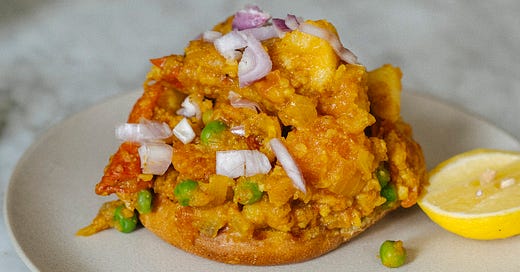


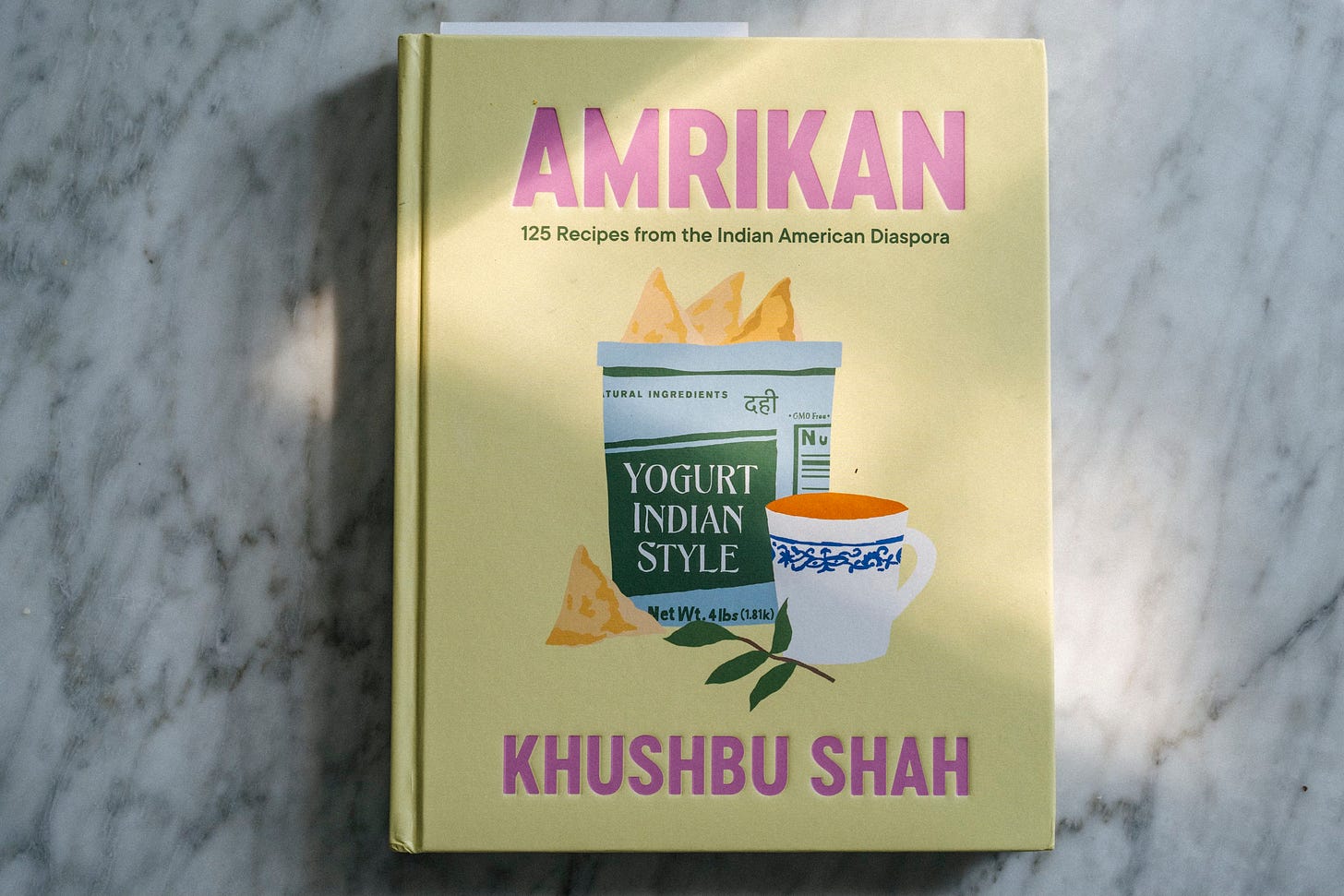

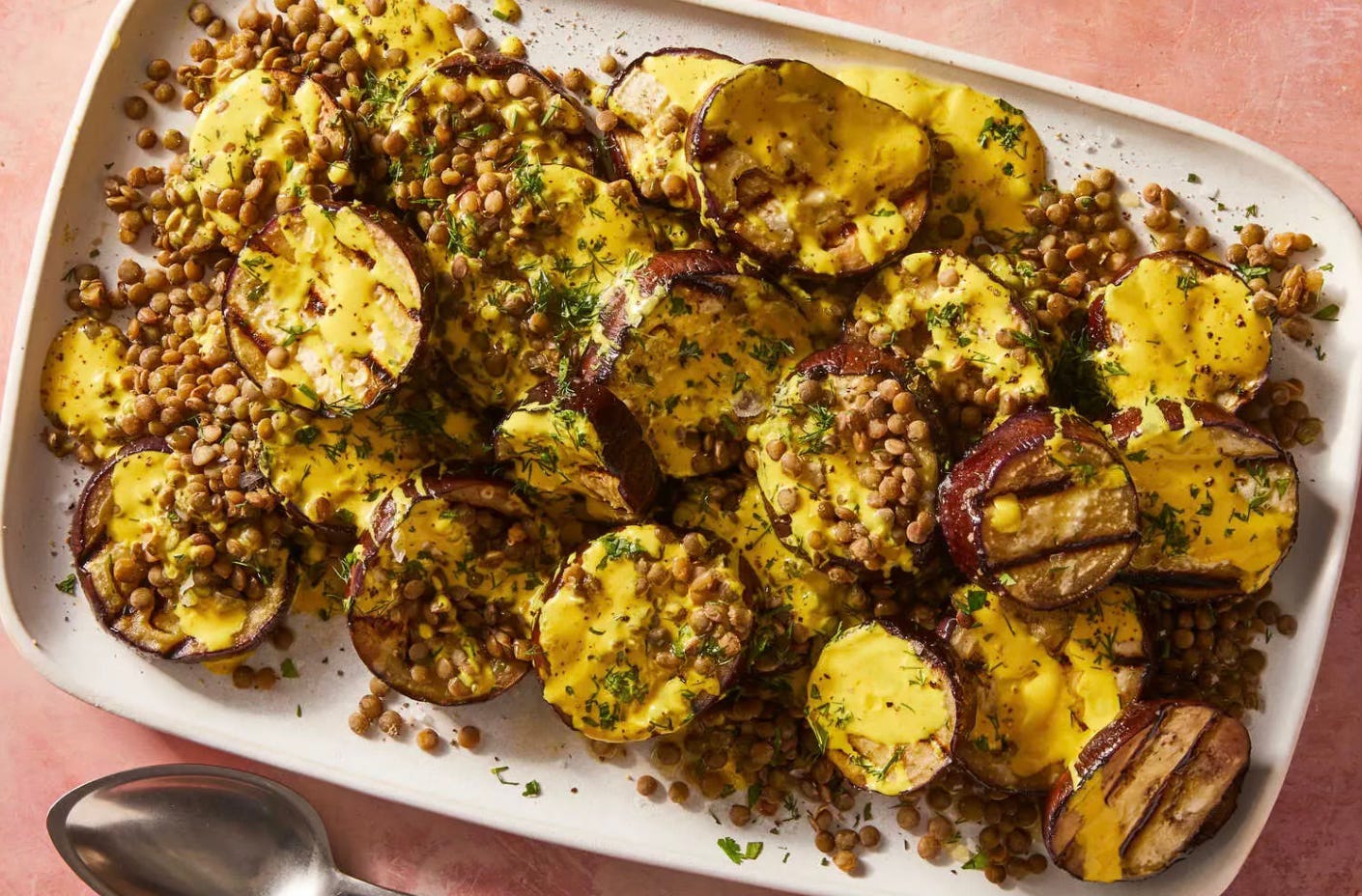

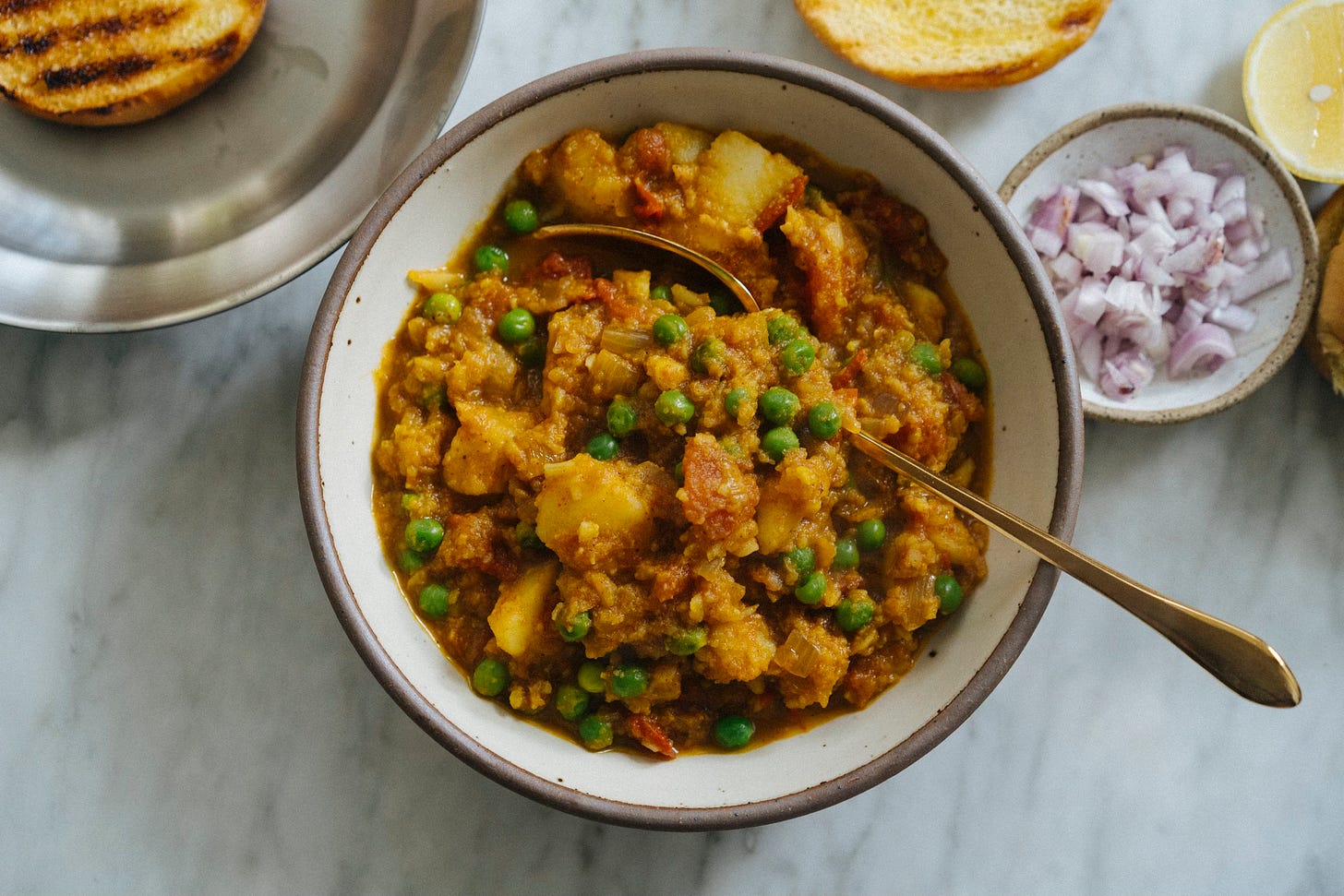
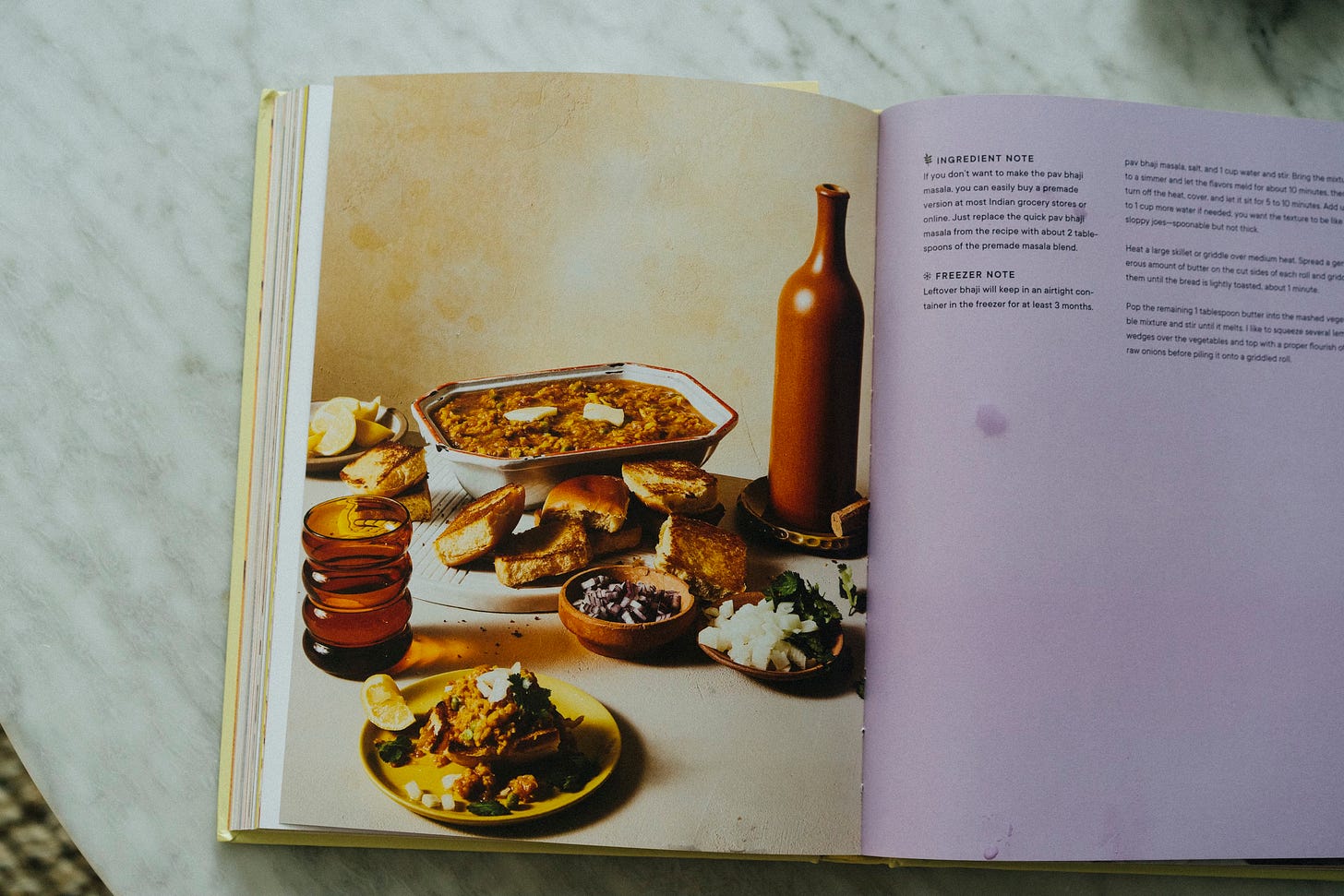
it was SO HARD to pick one recipe. i think that book's now on my must buy list
Ooooooooooooo, the butter! Yikes!